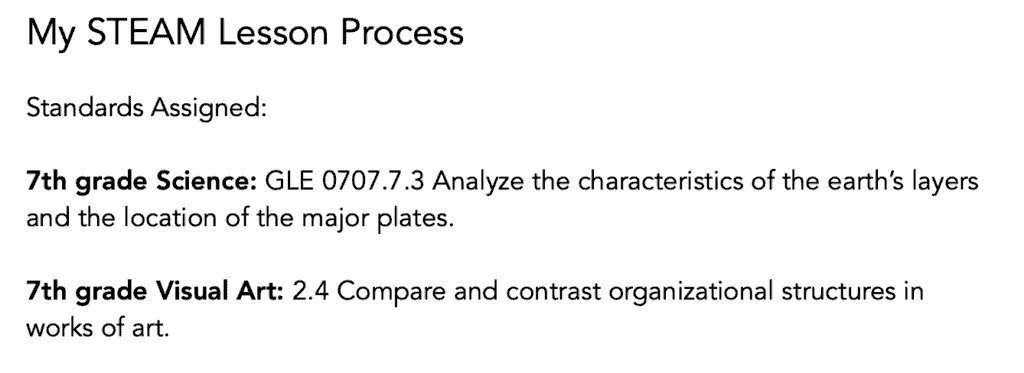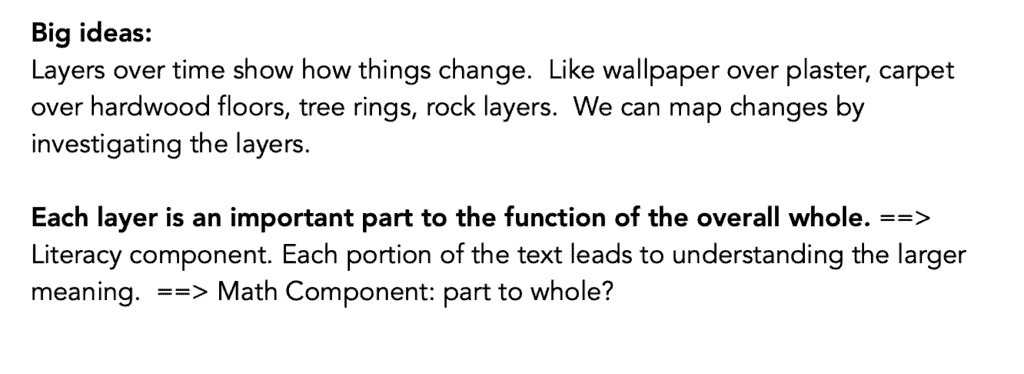Lesson Overview
Layering Changes
GRADES 7-8 SCIENCE AND ART
As you begin creating your own STEAM lessons, it’s helpful to see the thought process behind designing one. For this lesson, we’ll be asking students to use printmaking as a way to examine, explore, and recreate the layers of rock found in the earth.
The first step is to identify the standards I’m aligning for this lesson:

Then, we begin Thought-Sketching. This is simply a way to get our ideas or word associations down on paper. It helps us visualize any natural connections that might bubble to the surface:

Once you find your natural connections, it’s time to consider the big ideas you want students to investigate and know during the lesson. This helps narrow your lesson focus and determine your essential questions:

Finally, you’ll create a list of essential questions that could be used as an entryway into the lesson itself. From there, you’ll be able to create your lesson outline and have a solid idea for moving forward.
How can we determine changes that happen over time?
Lesson Process:
Step 1: Direct instruction of Earth’s Layers – explore the 4 main layers and their individual characteristics.
Step 2: Artful Thinking Activity: Claim/Identify/Question using a piece of printmaking.
Step 3: Explore the process of printmaking and examples of different textured prints.
Step 4: Direct instruction of texture
Step 5: Connection Strategy: Select textures that would best describe/indicate each layer of the earth.
Step 6: Printmaking Activity: In small groups, create texture plates for each of the earth’s layers and a whole-group print that includes layers from each of the texture plates. Create plates using texture materials and cardboard squares.
Step 7: Trade the final print with another group. Analyze the other group’s print to identify each layer presented.
![]() Time Required:
Time Required:
40-60 minutes
![]() Materials List:
Materials List:
- 25-30 cardboard squares
- Variety of texture materials (yarn, noodles, bubble wrap, rubber bands, foam pieces, ribbon, etc)
- Glue or double sided tape
- Brayer rollers
- Colored ink
- White printmaking paper
![]() Assessment:
Assessment:
Artist Reflection Written Statement.
Respond to the following questions in paragraph form:
1. Why was printmaking a good method of demonstrating geological layers?
2. What do rock layers and printmaking have in common?




